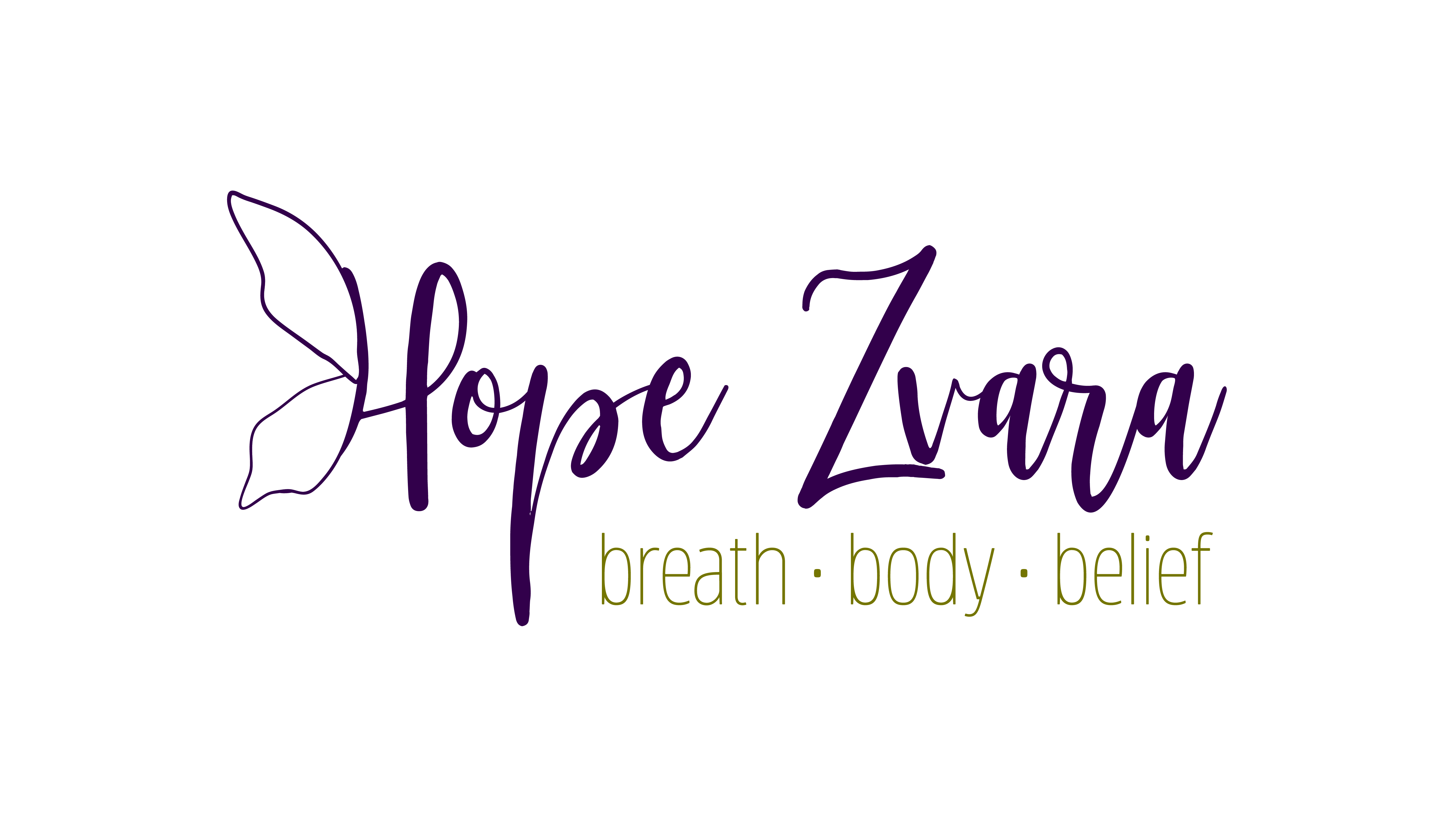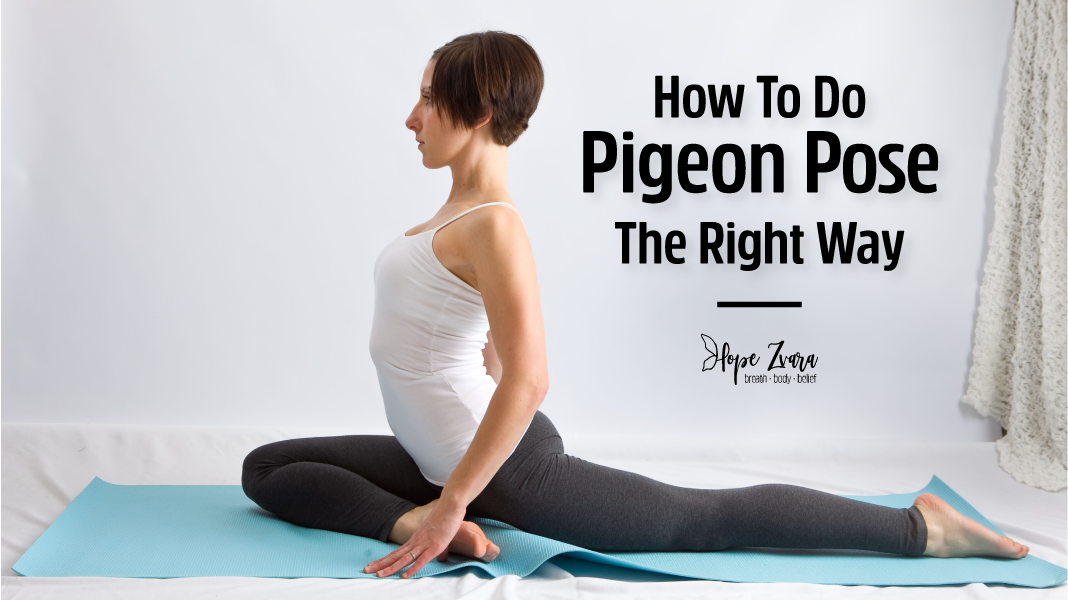Pigeon is a yoga pose we all love to hate. Its dynamics are intense and liberating at the same time.
This pose can aid in a laundry list of issues and symptoms, but for many, pigeon is a pose that we often just flop into with no real direction or understanding of how we should position our body and why.
Pigeon is about unlocking our deepest fears, traumas, and anxieties, a pose that releases the pressures put on our lower two chakras. These lower two chakras, the root and the sacral, house our relationships with ourselves and our relationship between you and me (one-on-one). Our needs for survival, intimacy, trust, and stability reside here.
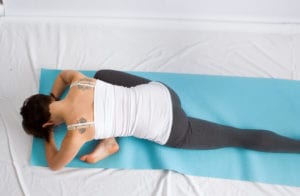
It’s been my observation that we’re a society in dire need of grounding, and releasing and developing trust. It will be difficult to trust others if you don’t trust yourself.
Having spent most of my life in recovery, I never really understood what that meant until I myself realized that I did not trust myself, honor myself and (to be blunt) like or love myself in any shape or form. The anxiety I’d feel in pigeon was the same anxiety I was feeling in life, in those tight uncomfortable situations. As I practiced and journeyed down the road of recovery, I began to notice a huge parallel in the two experiences.
To me, a big part of yoga is allowing yourself to feel.
I don’t just mean coming into class, flying around your mat for 75 minutes, and then laying down and calling it a day. Feeling on your mat means that you get in touch with your emotions, but also feel in your body what is actually going on, both on a physical level and an internal level. As we better understand what a pose is trying to offer us, we can then better appreciate the need for it and maybe even sustain a longer period of time in the pose.
For many people, their pigeon is lost from the nest with little awareness as to where to go. They are just mimicking the gestures of the other pigeons, hoping it is right.
I have come to understand and appreciate that not all poses are created equal. When your body can’t do something you want it to do, it will compensate with another body part. I like to make sure students are very clear about why they are moving in certain ways and what they might be feeling.
This Is What I Like To Call “Functional Pigeon”
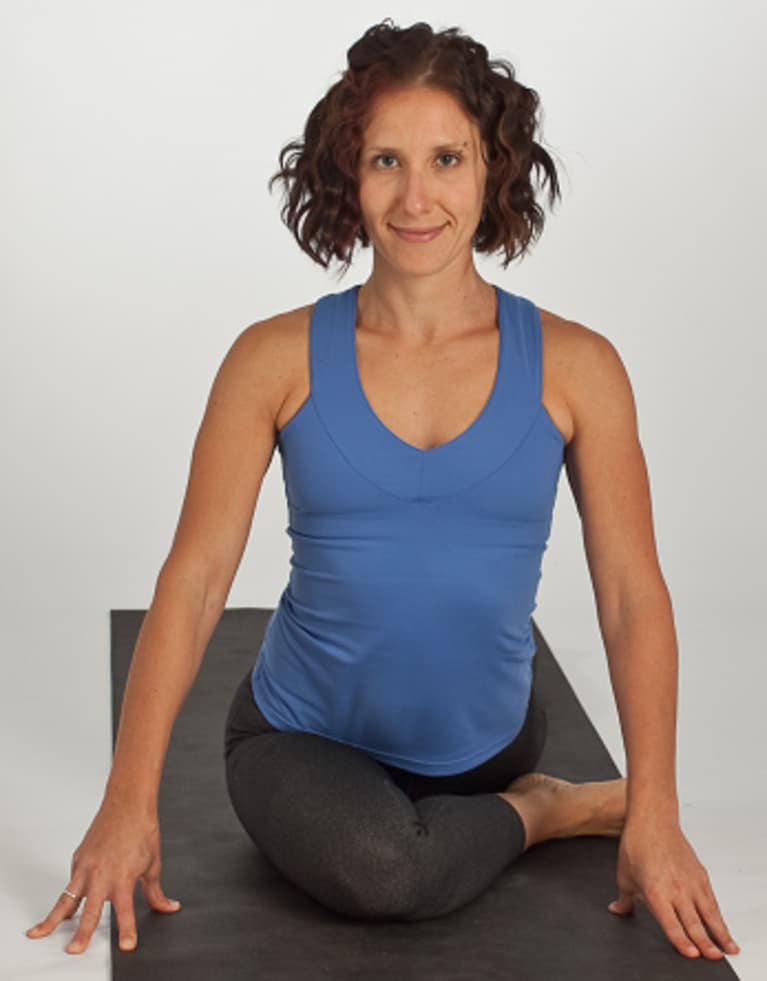 – Begin in a tabletop position, with two blocks nearby.
– Begin in a tabletop position, with two blocks nearby.– Exhale and slide your right knee forward so that the femur (thigh bone) and knee are directly in front of its hip socket.
– Comfortably align the right heel over towards the left hip without letting the knee slide to the side.
– Check the back leg and make sure you are on the top of the knee and thigh, your foot is laying flat and the leg is in line with its own hip socket as well.
– Inhale and begin to draw your torso upright, taking hold of your blocks to allow more stability to support the body.
– Draw your attention to the pelvis and notice if your ASIS (anterior superior iliac spine), AKA knobby points on the front of the pelvis are dropping forward and your lower back is crushed.
– Activate your pelvic floor to adjust the pelvis from a largely forward tilted position to a more upright position, this will take the load out of the lower back and also direct the stretch more fully across the front inner groin.
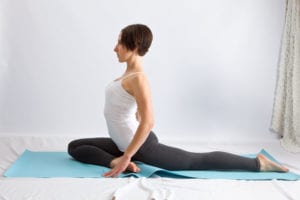
-Remain here for ten slow steady breaths, directing the release into the area of concern. Remember to keep the shoulders relaxed and the abdomen active and the outside of the left hip (back legs hip) moving forward, and at the same time feeling the hip of the front leg moving back.
– Now exhale, keeping the pelvic floor active walk your hands forward of your shoulders and being to come forward keeping your front femur bone in line with your hip socket. If you feel the need for more stretch draw the right foot forward of the left hip a few more inches, but still not allowing the knee to slide out.
– Flex the front foot and lengthen the back foot a bit more by rolling the toes under and drawing the leg back a few more inches, after which extending through the toes and pressing through the top of the foot.
– Work to sit your right hip back even more, and draw the left hip even more forward. Do not fall into the right hip, instead, prop up the hip with a block or blanket to stay aligned.
– Finally, extend your arms as far as you can forward, when extending the arms you better lengthen the spinal muscles. Use head support if needed not to strain the neck and to add pressure to the third eye point, sending a wonderful signal to the central nervous system to relax.
Those that suffer from lordosis will most likely find this difficult but beneficial. Those with hip replacements will have better success in this version, as well, as the femur is not turning inward into the hip not but directly back into the muscle. Those with sciatica will have more long term relief and for the rest of us, this unwinding that we are stepping into will have a de-layering effect that will last longer and see more long-term benefits.
When Working With Functional Pigeon
Students get a deeper more beneficial stretch through the gluteals: medius, maximus, and minimus. The head of the femur is now directed directly back into the buttock flesh rather than inward into the sacrum.
This variation has a more positive effect on:
- Piriformis, whose origin is the inside surface of the sacrum and sacrotuberous ligament and inserts on the tip of the greater trocanter (greater trocanter is the head of the femur that does not go into the hip socket)
- Quadratus Femoris, whose origin is the side of the sits bone and inserts on the back surface of the greater trocanter.
- Hamstrings engage in a more full stretch as the femur head directs itself back rather than in.
- When upright in pigeon, the psoas and iliacus has a more complete stretch and release.
This is just the beginning of what functional pigeon can do for you. You can get the full breakdown of the foundational yoga poses in my Asana Library ($137), but it is included FOR FREE in my Premium Online Studio.
Take some time with this new version of pigeon. Many find it more difficult as we are digging deeper into the body. I find it essential to remember in yoga that it is not where we are going, but where were we are right now that is important. This reminds us to take a moment to better understand where that is exactly.
